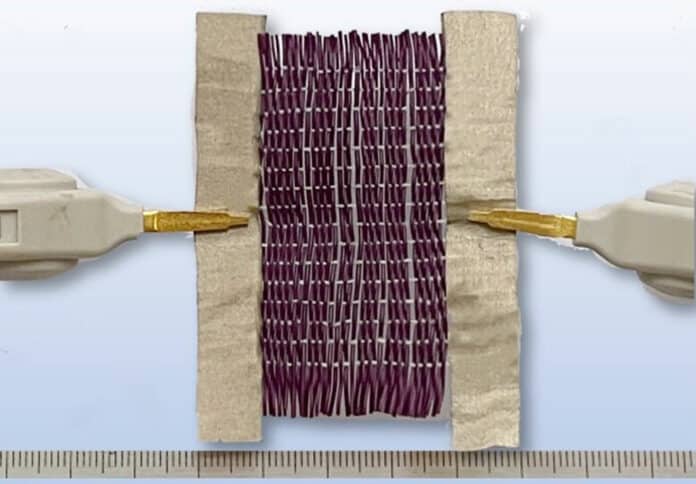Scientists at the University of Waterloo have developed a new smart material that responds to two stimuli. It is activated by both heat and electricity.
The programmable fabric is manufactured inexpensively from polymer nano-composite fibers made from recycled plastic, and it can change color and shape in response to stimuli. Thanks to its unique design, the fabric can be used in several applications, such as clothing that warms up. At the same time, you walk from the car to the office in winter, and vehicle bumpers return to their original shape after a collision.
Dr. Milad Kamkar, a chemical engineering professor at Waterloo, said, “As a wearable material alone, it has almost infinite potential in AI, robotics, and virtual reality games and experiences. Imagine feeling warmth or a physical trigger eliciting a more in-depth adventure in the virtual world.”
The revolutionary fabric design, which combines highly designed polymer composites and stainless steel in a woven framework, results from the harmonious coexistence of soft and hard materials.
Scientists developed a device that looks like a standard loom to weave the smart fabric. The resulting method is incredibly flexible and allows for both design freedom and large-scale control of the fabric’s characteristics.
The fabric can also be activated by a lower electricity voltage than previous systems, making it more energy-efficient and cost-effective. In addition, lower voltage allows integration into smaller, more portable devices, making it suitable for use in biomedical devices and environment sensors.
Kamkar said, “The idea of these intelligent materials was first bred and born from biomimicry science.”
“Through the ability to sense and react to environmental stimuli such as temperature, this is proof that our new material can interact with the environment to monitor ecosystems without damaging them.”
Journal Reference:
- Runxin Xu et al., Multi‐Stimuli Dually‐Responsive Intelligent Woven Structures with Local Programmability for Biomimetic Applications, Small (2023). DOI: 10.1002/smll.202207900
